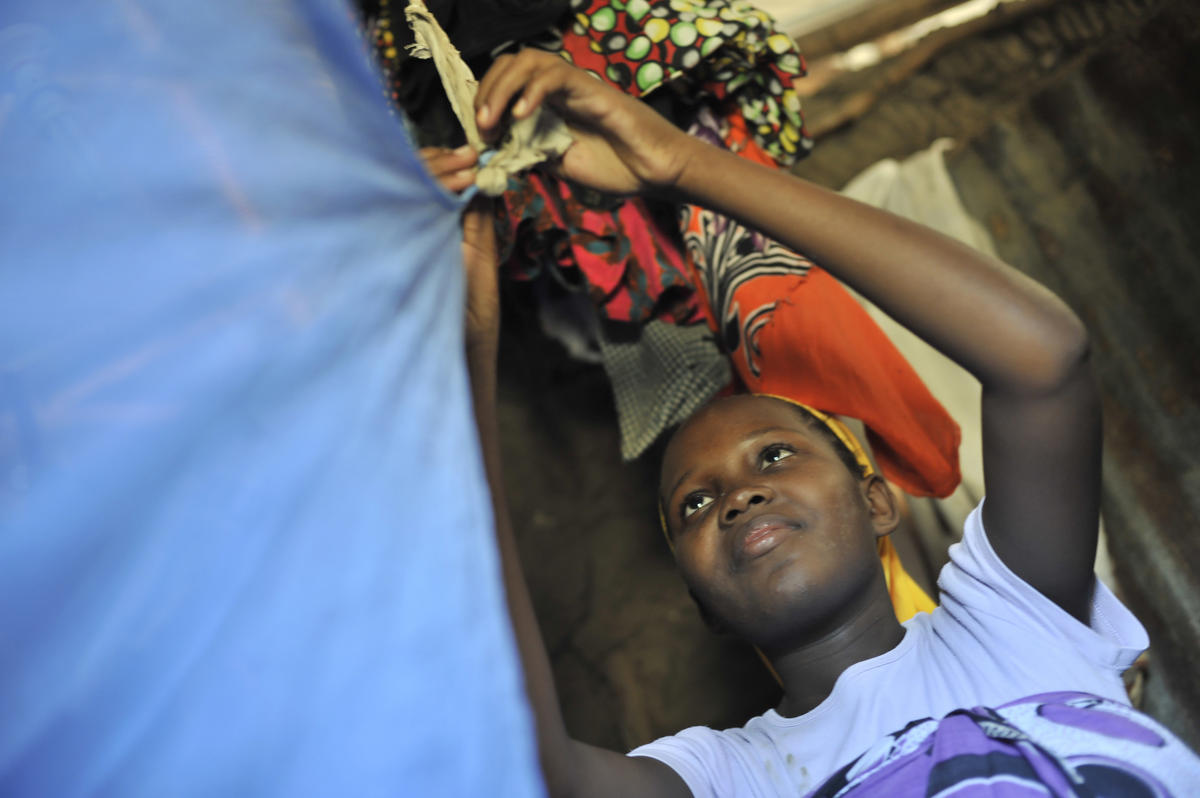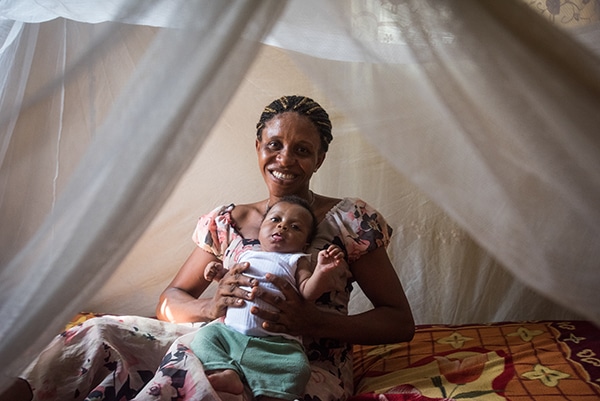Wherever possible, researchers should not just focus on mosquito behavior when working to eliminate malaria, but must also consider how humans behave at night when the risk of being bitten by an infected mosquito is highest, new findings from the Johns Hopkins Center for Communication Programs suggest.
A CCP-led review article published in Malaria Journal last week finds that while there is substantial research into when malaria mosquitoes bite, when they are most active and which species are most likely to spread disease, there is very little that considers the other side of the equation: people.
“The neglected piece has really been human behavior,” says CCP’s April Monroe, who works on the VectorWorks project funded by the President’s Malaria Initiative. “There’s been a big focus on mosquito behavior. But you have to look at mosquitoes and people together to really understand what is going on and how to reduce malaria risk.”
Insecticide-treated bed nets are the leading reason why there has been a significant reduction in malaria over the past 15 years, with a 41 percent decrease in malaria rates and a 62 percent decrease in malaria deaths. But bed nets only work when people sleep under them.
While studies have shown that most people who have nets use them, there are times when malaria mosquitoes are biting when it may not be possible to use a net. This includes while doing household chores and socializing in the evening before bed, as well as during outdoor night-shift jobs, such as providing security or fishing, and while attending community events such as funerals, weddings or religious events which can last throughout the night.
“Insecticide-treated nets are our best tool for preventing malaria right now but we also know that nets alone won’t be sufficient to bring the number of malaria cases to zero,” Monroe says. “While nets will remain crucial for years to come, we must also provide appropriate solutions to people that protect them where and when they need it.”
The researchers screened nearly 3000 peer-reviewed journal articles and analyzed 26 that provided information on when and where people are exposed to malaria-transmitting mosquitoes and what nighttime activities are occurring during the hours when mosquitoes are most active.
After conducting the review, Monroe and her colleagues recommend that researchers use a standardized approach to measuring both human and mosquito behavior across time and settings. This information, she says, is essential for targeting existing tools, social and behavior change interventions and the development and deployment of prevention tools to complement bed nets and indoor spraying.
“People are still getting malaria, even in places where there is broad use of bed nets,” Monroe says. “We need to fill those gaps and make decisions on how to better protect people. A greater understanding of human behavior and the interaction of humans and mosquitoes is crucial if we are going to eliminate malaria.”





